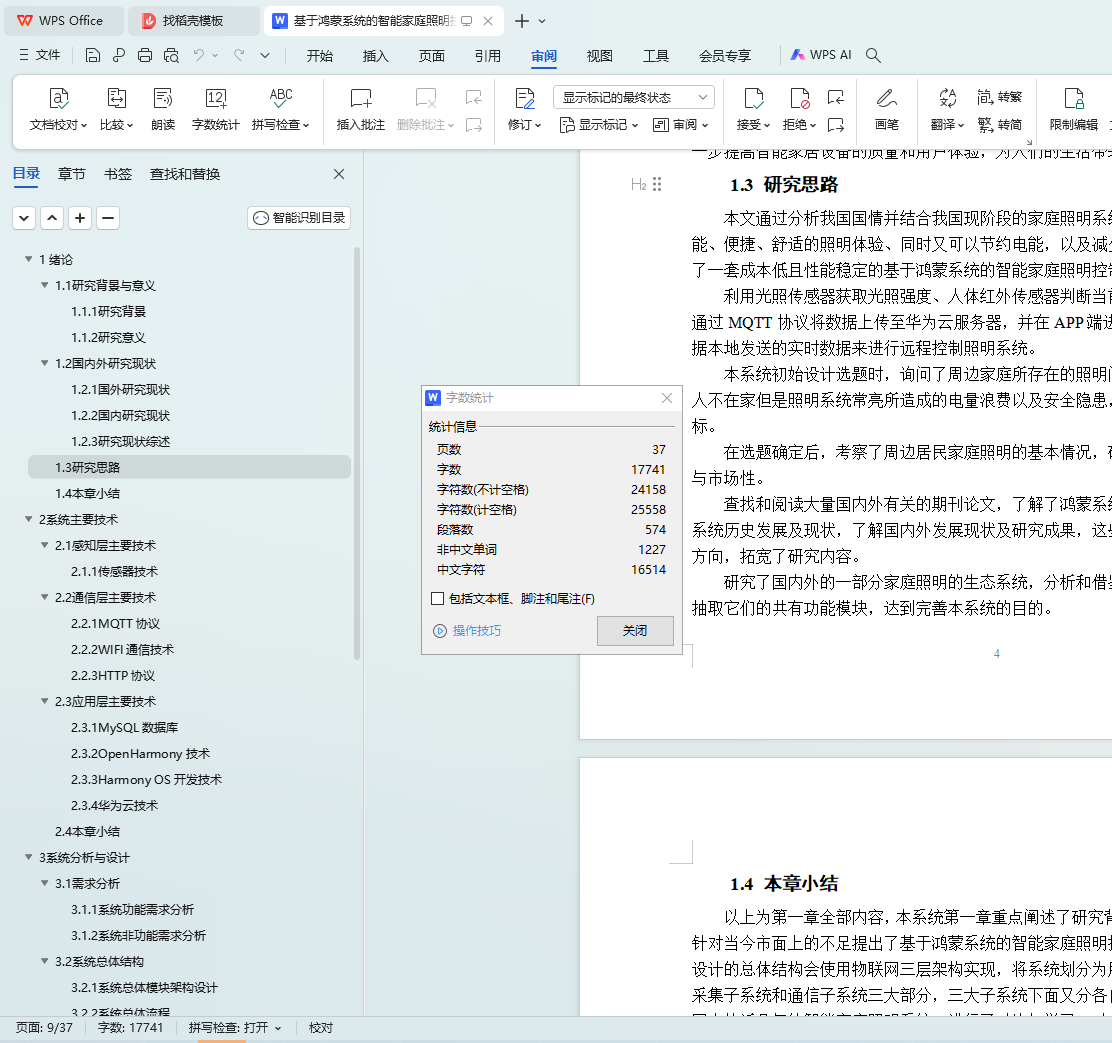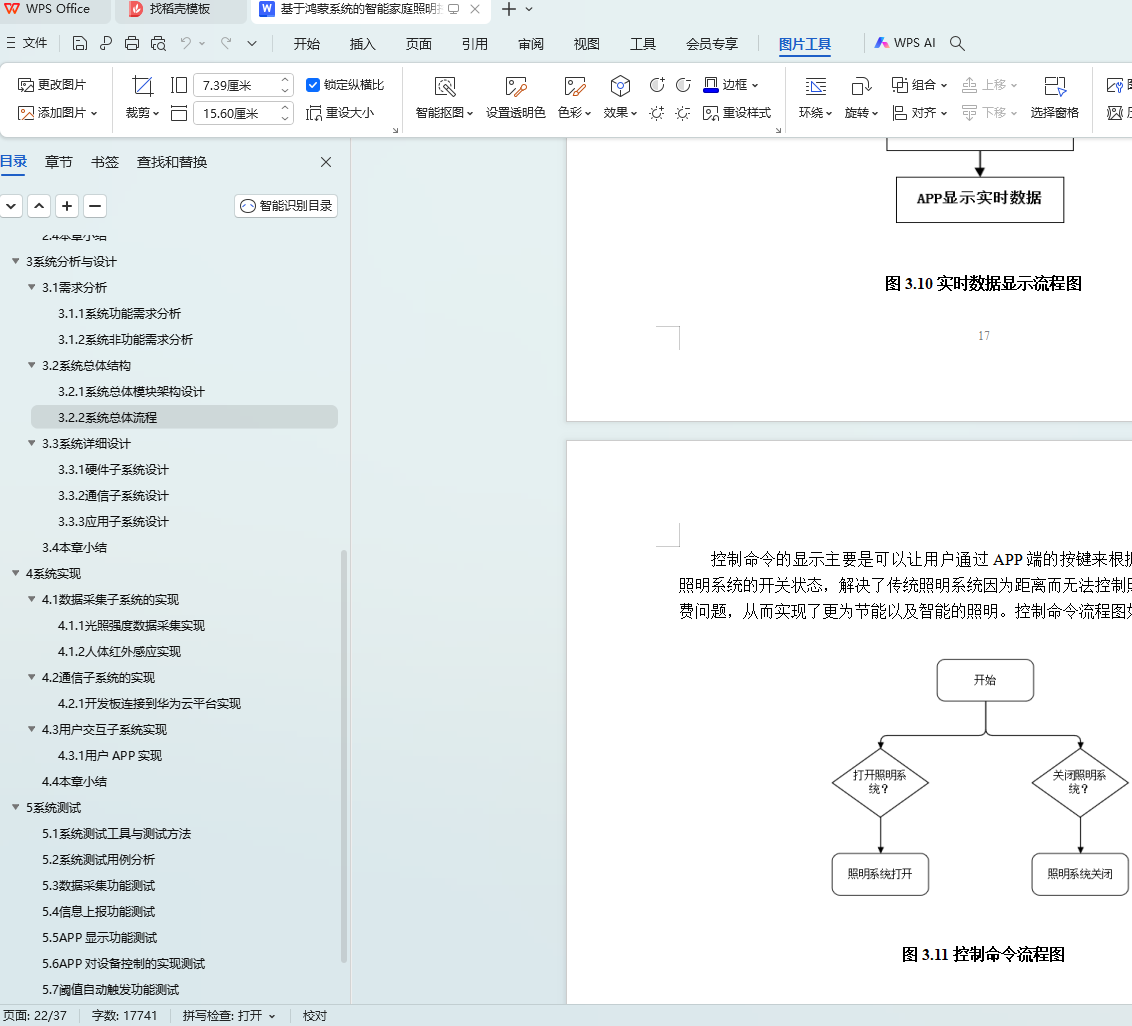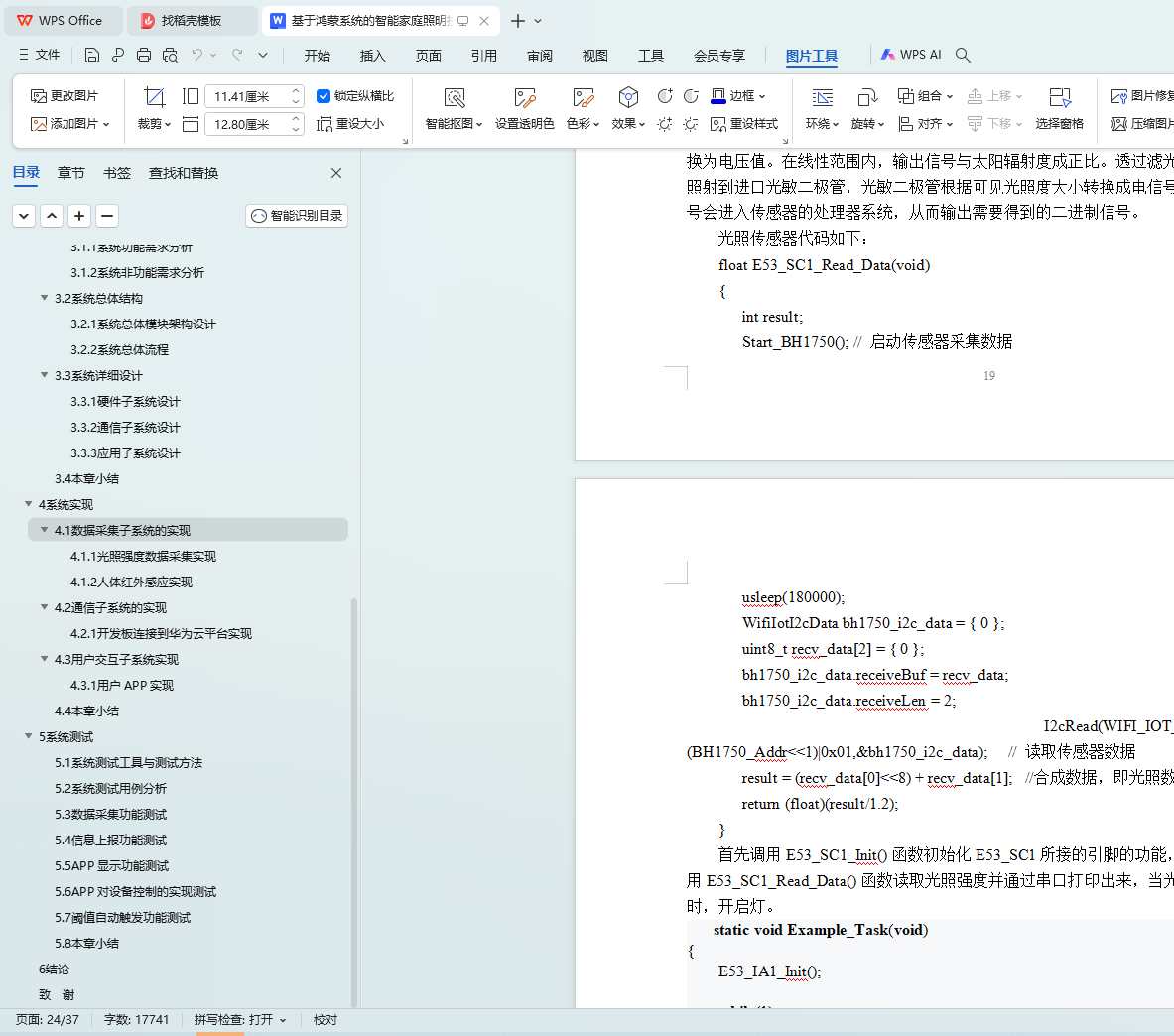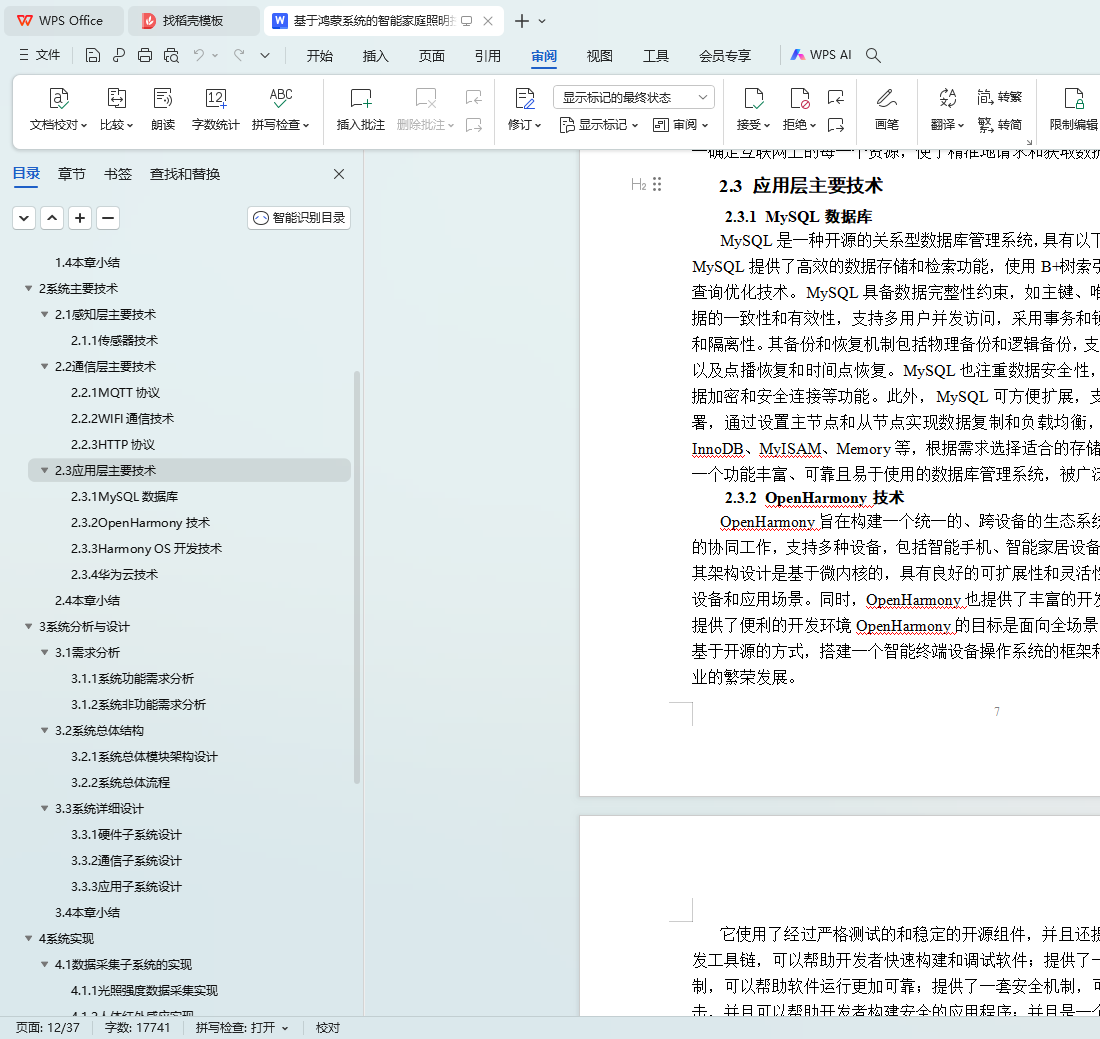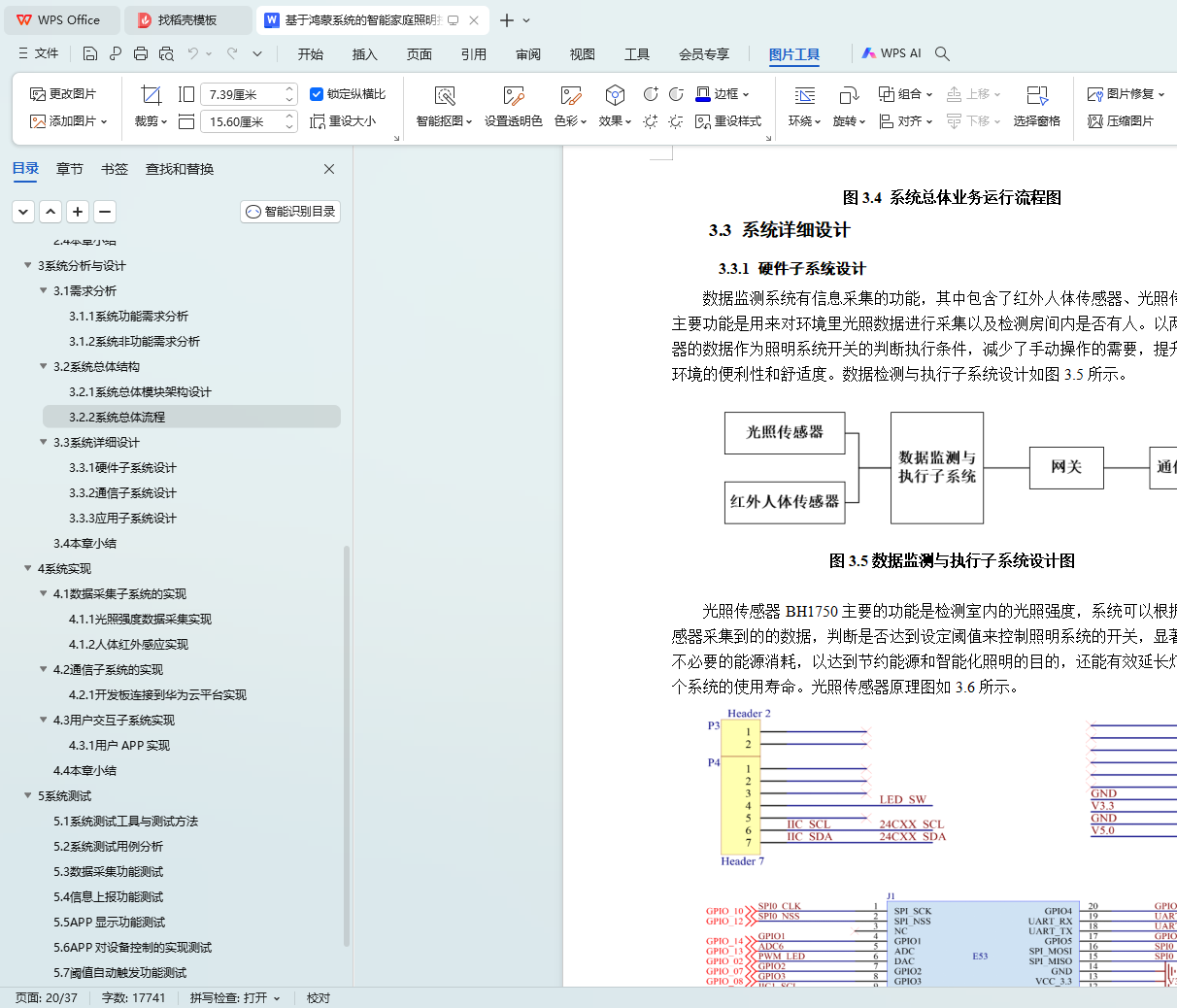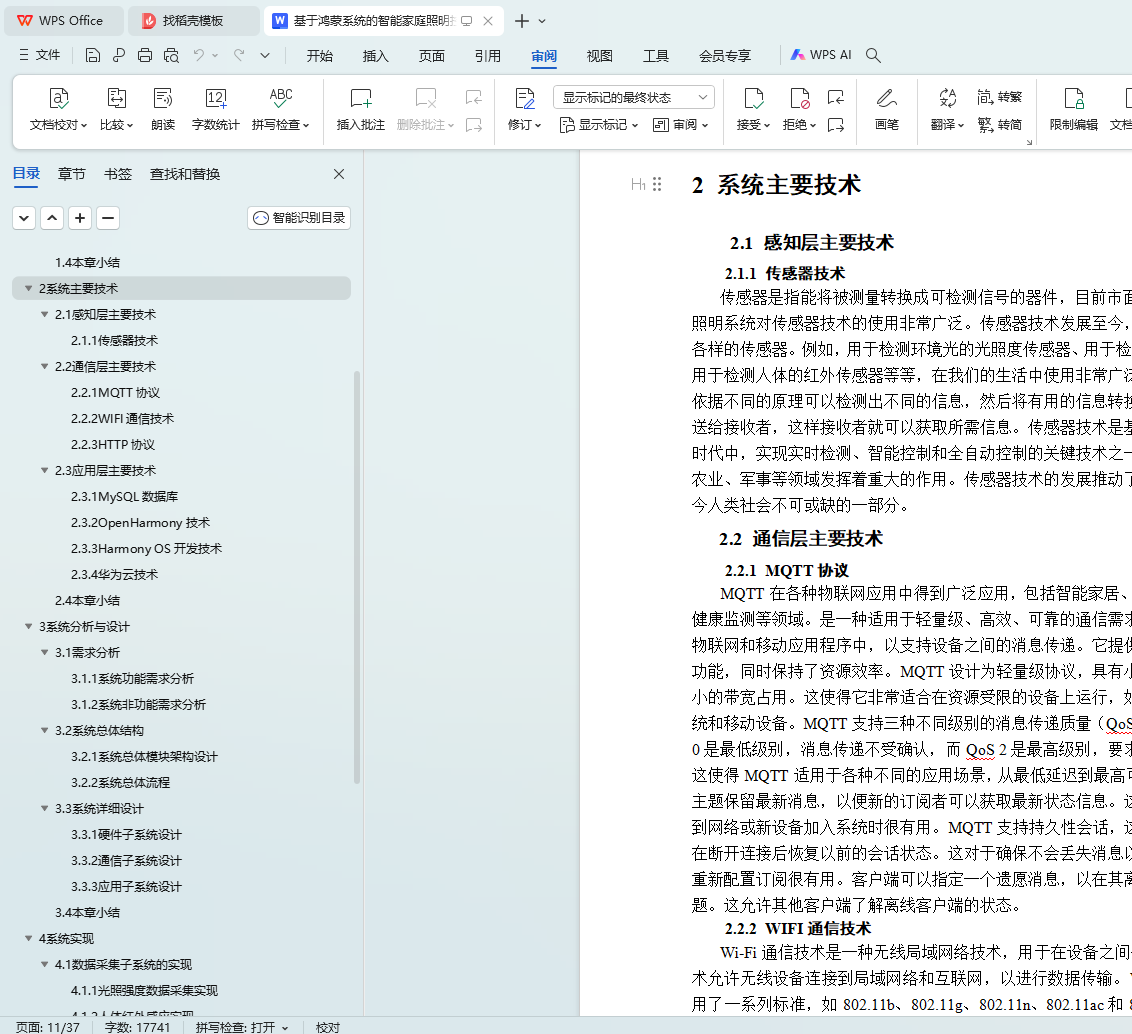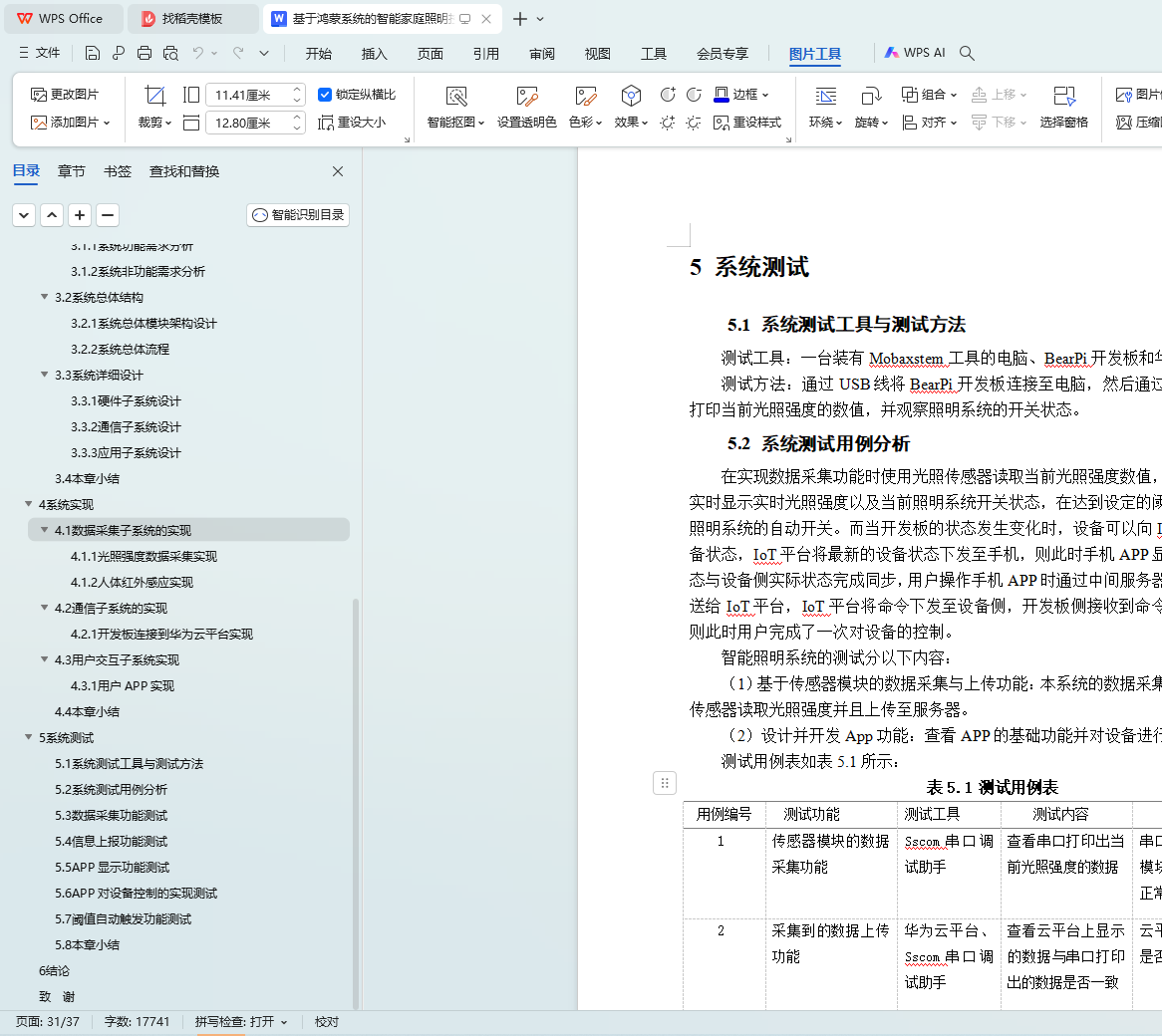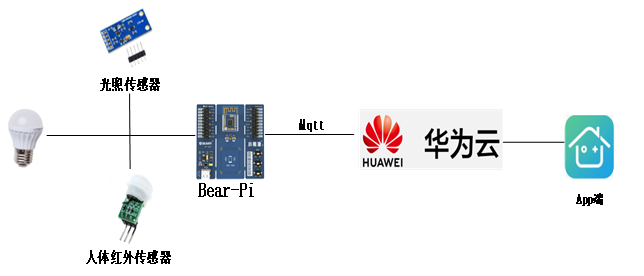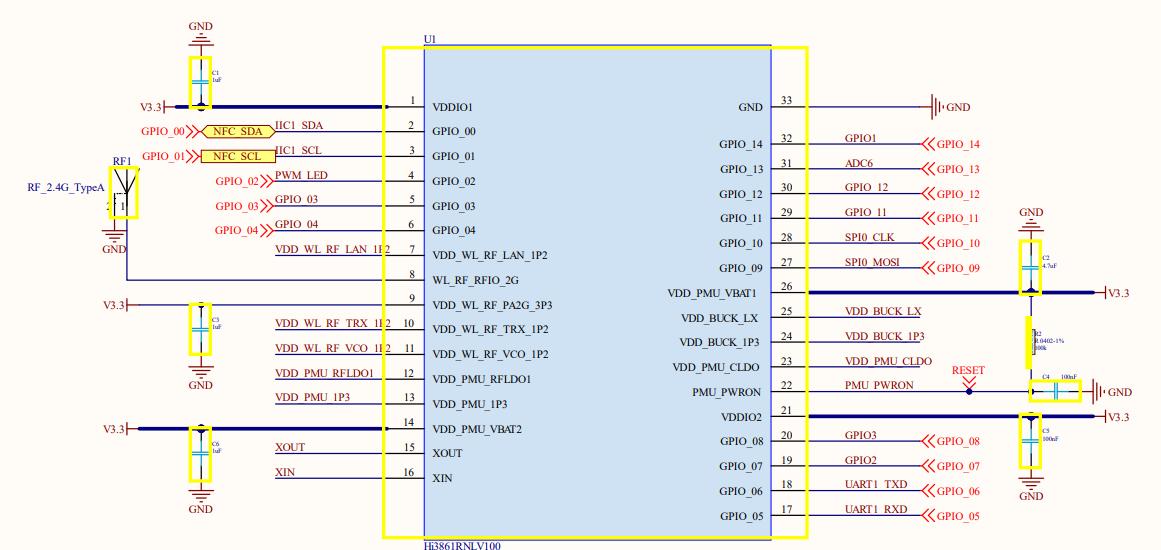基于鸿蒙系统的智能家庭照明控制系统的设计与实现 毕业论文
封面示例(摘 要
随着中国经济社会不断发展、城市化建设加速运行、新农村建设步伐加快,我国居民的家居环境得到进一步改善,居民对家居环境的要求也进一步提高,促使家居行业向更舒适、更便捷、更安全、更高效方向发展。
照明系统是智能家居环境发展不可或缺的组成部分, 而传统的照明控制,主要是为了满足人们在生活生产中对于光照强度的需求。在控制方面,多以开关控制为主,用户能够通过开关来控制灯具的开闭。这类照明设备的功能简单,安装价格便宜,互换性好。但存在的问题是,大范围使用的情况下,只能通过人为进行控制,无法对大量的照明设备进行快速有效的管理,很容易由于人为的操作问题造成电能的浪费。因此,人们对照明的品质有了更高的追求和要求, 家庭照明系统由传统化逐渐走向智能化已经成为了一种发展趋势。
本系统在鸿蒙系统的基础上采用人体红外传感器以及光照传感器判别当前房间内的检测数值是否需要打开或者关闭照明系统,当检测到房间内有人并且达到所设置光照强度的阈值时,则自动打开照明系统,当检测到房间内没有人或者没有达到所设置光照强度的阈值时,则自动关闭照明系统,同时通过华为云在APP显示光照强度以及当前照明系统状况,并且用户也可进行远程调控,为人们的生活带来更多的便利。
关键词:华为云;鸿蒙系统;家庭照明
ABSTRACT
With the continuous development of China's economy and society, the acceleration of urbanization construction and the acceleration of the pace of new rural construction, the home environment of Chinese residents has been further improved, and the requirements of residents for the home environment have been further improved, prompting the home industry to develop in the direction of more comfortable, more convenient, safer and more efficient.
Lighting system is an integral part of the development of smart home environment, and traditional lighting control is mainly to meet people's needs for light intensity in life and production. In terms of control, mostly switch control, the user can control the opening and closing of the lamp through the switch. The function of this kind of lighting equipment is simple, the installation price is cheap, and the interchangeability is good. However, the problem is that in the case of a wide range of use, it can only be controlled by humans, and a large number of lighting equipment can not be quickly and effectively managed, and it is easy to waste electrical energy due to human operation problems. Therefore, people have a higher pursuit and requirements for the quality of lighting, and the home lighting system has become a development trend from traditional to intelligent.
Based on HarmonyOS, the system uses human infrared sensor and light sensor to determine whether the lighting system needs to be turned on or off when the detection value in the current room is detected. When someone is detected in the room and the light intensity threshold is reached, the lighting system will be automatically turned on. When no one is detected in the room or the light intensity threshold is not reached, the lighting system will be automatically turned on. The lighting system is automatically turned off, while the lighting intensity and current lighting system status are displayed in the APP through Huawei Cloud, and users can also remotely control, bringing more convenience to people's lives.
KEYWORDS: Huawei Cloud;HarmonyOS;Home lighting
目 录
